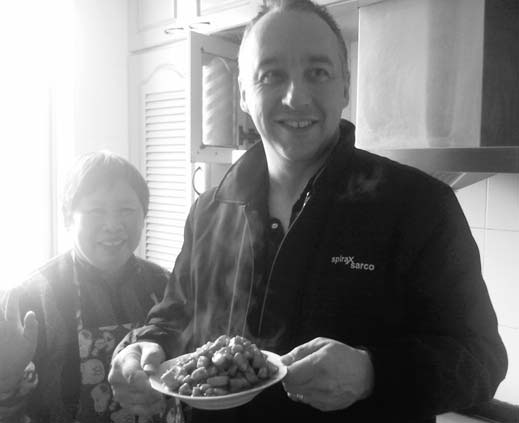Tourists get a slice of life from Shanghai locals
Updated: 2013-09-22 07:58
By Wu Ni in Shanghai(China Daily)
|
|||||||
|
Caoyang New Village's hospitable hosts often serve foreign guests rich feasts. Provided to China Daily |

A renowned community in Shanghai is inviting foreign tourists to experience local culture by engaging in the daily life of its people.
The Caoyang New Village in Putuo district has launched the new tour project "One Day as a Caoyang Resident" that allows foreigners to join local families and live like ordinary Shanghai natives.
There are different levels of tours, depending on how deep foreigners would like to engage the local community, according to Ding Xiuyuan, who works in the foreign liaison office of the community.
For general visits, international tourists can visit local residents' homes, talk with them with the help of a guide and visit the wet market to find a bargain. They should call to make an appointment first. The tour needs at least five visitors to proceed and costs 30 yuan ($4.90) per person.
For a more colorful journey, participants can experience traditional Chinese medical treatments, acupuncture or massages in a local hospital, learn to cook sweet and sour pork - a Shanghai specialty - in a vocational school, and enjoy the performance of a chorus made up of elderly local women, just to name a few activities. This tour requires at least 10 visitors and charges 60 yuan per person.
"The most popular tour, to our surprise, is a visit to the wet market. Many tourists say it is a novel experience in which they can see the living conditions of ordinary people," Ding says.
The opportunity to enjoy a meal with a local family is also popular with international visitors. They learn how to make wontons, and the hospitable hosts often serve foreign guests rich feasts.
The host family gets paid for the meal, but Xue Lingmei, a Caoyang resident whose family hosts foreign tourists once every week, feels even happier to "hear the guests say this is the most delicious meal they had in China".
Also, the visitors can spend the night with local families, Ding says, and on the next morning they can visit Caoyang Park and join the cheerful groups of old men and women who sing, dance or practice shadow boxing.
The Caoyang community has a long history of entertaining international tourists. For the past 60 years, it has received more than 300,000 people from more than 150 countries. Some of them are officials and prominent public figures, like former US president Jimmy Carter, but most are ordinary people who want to get to know Chinese families.
Some of Shanghai's communities had initiated a similar tour project, Ding says, but Caoyang is the only community that keeps the tradition and enriches it, thanks to its historical significance.
Caoyang New Village is well known in Shanghai as one of the first and most successful workers' settlements. It was constructed in 1951, two years after the establishment of the People's Republic of China.
A large piece of deserted land in southeast Shanghai was turned into a community housing about 1,000 families. Each segment has living units divided over three floors, with a communal kitchen and bathroom area serving three dwelling units on each floor.
The community then expanded in the following decades to nine villages with about 20,000 households. It became the first community in Shanghai that opened up to the outside world, a window to showcase new China's achievements in improving the living conditions of workers, who used to live in thatched shacks or shabby dormitories.
"It was like a dream that workers can live in houses with kitchens and bathrooms. Moreover, we had facilities like schools, a hospital and post office, which made it like a modern community," Ding says.
The earliest blocks in the community were preserved for their historical value, while others were later demolished to make space for modern buildings.
Today, visitors can also have a glimpse of past glory by visiting the newly opened village history exhibition room, where old-fashioned radios, treadle-type sewing machines and other items hark to the 1960s and '70s.
wuni@chinadaily.com.cn
(China Daily 09/22/2013 page15)
